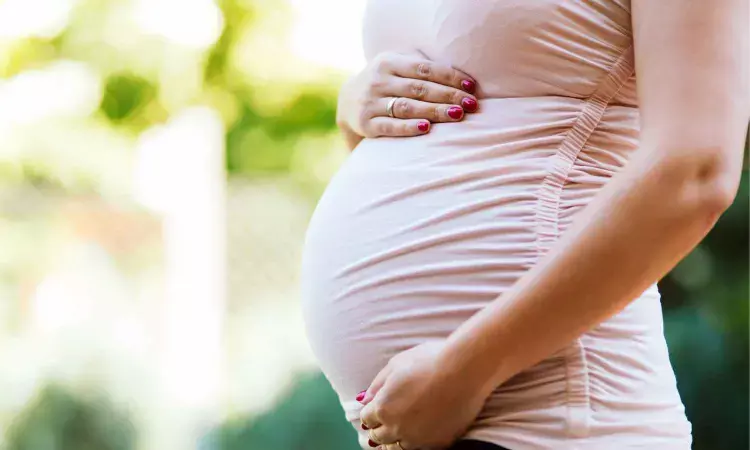- Home
- Medical news & Guidelines
- Anesthesiology
- Cardiology and CTVS
- Critical Care
- Dentistry
- Dermatology
- Diabetes and Endocrinology
- ENT
- Gastroenterology
- Medicine
- Nephrology
- Neurology
- Obstretics-Gynaecology
- Oncology
- Ophthalmology
- Orthopaedics
- Pediatrics-Neonatology
- Psychiatry
- Pulmonology
- Radiology
- Surgery
- Urology
- Laboratory Medicine
- Diet
- Nursing
- Paramedical
- Physiotherapy
- Health news
- Fact Check
- Bone Health Fact Check
- Brain Health Fact Check
- Cancer Related Fact Check
- Child Care Fact Check
- Dental and oral health fact check
- Diabetes and metabolic health fact check
- Diet and Nutrition Fact Check
- Eye and ENT Care Fact Check
- Fitness fact check
- Gut health fact check
- Heart health fact check
- Kidney health fact check
- Medical education fact check
- Men's health fact check
- Respiratory fact check
- Skin and hair care fact check
- Vaccine and Immunization fact check
- Women's health fact check
- AYUSH
- State News
- Andaman and Nicobar Islands
- Andhra Pradesh
- Arunachal Pradesh
- Assam
- Bihar
- Chandigarh
- Chattisgarh
- Dadra and Nagar Haveli
- Daman and Diu
- Delhi
- Goa
- Gujarat
- Haryana
- Himachal Pradesh
- Jammu & Kashmir
- Jharkhand
- Karnataka
- Kerala
- Ladakh
- Lakshadweep
- Madhya Pradesh
- Maharashtra
- Manipur
- Meghalaya
- Mizoram
- Nagaland
- Odisha
- Puducherry
- Punjab
- Rajasthan
- Sikkim
- Tamil Nadu
- Telangana
- Tripura
- Uttar Pradesh
- Uttrakhand
- West Bengal
- Medical Education
- Industry
Bypassing Local Hospitals tied to higher severe maternal morbidity and mortality Risk in Rural Mothers: JAMA

A new study published in the Journal of American Medical Association showed that the risks of severe maternal morbidity and mortality (SMMM) were comparable for local births in rural and urban areas. However, the chances of SMMM were much greater for rural women who gave delivery outside of their local facilities.
Higher rates of severe maternal morbidity and mortality and a shortage of obstetricians at nearby hospitals are experienced by rural populations. However, there is no information on postpartum SMMM among these rural individuals who give birth outside of their community. Thus, to estimate postpartum SMMM among urban, rural nonlocal, and rural local newborns, this study was carried out.
Using data from all-payer hospital inpatient, outpatient, and emergency department visits linked to vital records for birth and death certificate information, this study identified all childbirth deliveries and hospitalization discharges in South Carolina between January 1, 2018, and December 31, 2022, and followed up for a year after giving birth.
The 2023 Rural-Urban Continuum Codes definitions (1-3, urban; 4-9, rural) are used to categorize urban residence, rural residency with nonlocal birth (i.e., urban hospital deliveries), and rural residency with local birth (i.e., deliveries at in-county or nearby rural hospitals).
Out of 235 375 births to 197 216 women, 203 325 (86.4%) were to urban residents, 15 053 (6.4%) were to rural residents who avoided local birth sites for urban hospitals, and 16 997 (7.2%) were to rural residents who delivered locally, which resulted in a 47.0% bypassing rate for rural residents. Rural nonlocal deliveries had the greatest SMMM (180.0 per 10,000 births), with comparable rates for urban (118.8 per 10,000 births) and rural local deliveries (114.7 per 10,000 births).
When clinical factors, maternal sociodemographic characteristics, and hospital characteristics were taken into account, the risk of SMMM was still higher for rural nonlocal deliveries compared to urban deliveries (adjusted hazard ratio, 1.18; 95% CI, 1.04-1.33), but it was not significantly different for rural local deliveries.
Overall, bypassing local hospitals was linked to an elevated risk of SMMM, while rural local births had SMMM risks similar to urban births in this cohort research of South Carolina baby deliveries from 2018 to 2022. For rural nonlocal deliveries, targeted interventions that support prompt follow-up, postpartum care coordination, and birthing discharge planning may help reduce these discrepancies.
Source:
Hung, P., Gao, H., Liu, J., Rudisill, A. C., Boghossian, N. S., Campbell, B. A., Workman, L., Ma, Y., & Zhang, J. (2025). Severe maternal morbidity and mortality after delivery hospitalization among rural residents bypassing local care for urban hospitals. JAMA Network Open, 8(11), e2544522. https://doi.org/10.1001/jamanetworkopen.2025.44522
Neuroscience Masters graduate
Jacinthlyn Sylvia, a Neuroscience Master's graduate from Chennai has worked extensively in deciphering the neurobiology of cognition and motor control in aging. She also has spread-out exposure to Neurosurgery from her Bachelor’s. She is currently involved in active Neuro-Oncology research. She is an upcoming neuroscientist with a fiery passion for writing. Her news cover at Medical Dialogues feature recent discoveries and updates from the healthcare and biomedical research fields. She can be reached at editorial@medicaldialogues.in
Dr Kamal Kant Kohli-MBBS, DTCD- a chest specialist with more than 30 years of practice and a flair for writing clinical articles, Dr Kamal Kant Kohli joined Medical Dialogues as a Chief Editor of Medical News. Besides writing articles, as an editor, he proofreads and verifies all the medical content published on Medical Dialogues including those coming from journals, studies,medical conferences,guidelines etc. Email: drkohli@medicaldialogues.in. Contact no. 011-43720751


